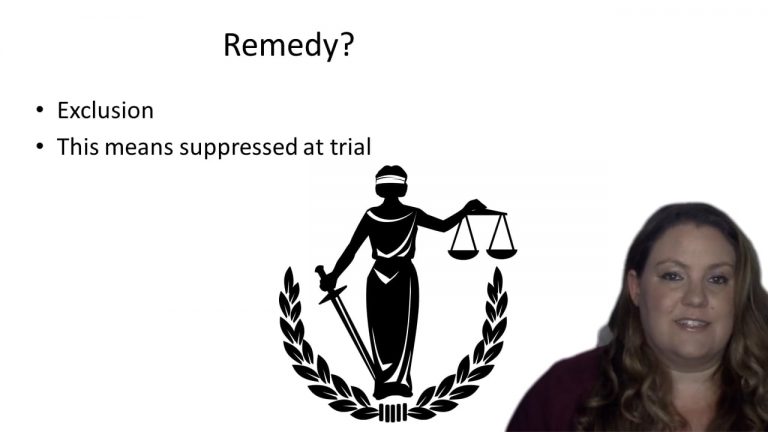SmartBrief
Confirm favorite deletion?
Criminal Procedure Keyed to Dressler
United States v. Karo
Citation:
468 U.S. 705, 104 S.Ct. 3296, 82 L.Ed.2d 530.Facts
In August of 1980, a law enforcement agent learned that the defendants had ordered 50 gallons of ether to extract cocaine from clothing that had been imported into the United States. The Government obtained a court order authorizing the installation and monitoring of a beeper in one of the cans of ether. With the original owner’s consent, agents substituted their own can containing a beeper for one of the cans in the shipment and then had all 10 cans painted to give them a uniform appearance.
Prior to trial, the district court suppressed the evidence. The circuit court affirmed, holding that it was a violation of the defendants’ Fourth Amendment rights.
Only StudyBuddy Pro offers the complete Case Brief Anatomy*
Access the most important case brief elements for optimal case understanding.
*Case Brief Anatomy includes: Brief Prologue, Complete Case Brief, Brief Epilogue
- The Brief Prologue provides necessary case brief introductory information and includes:
Topic:
Identifies the topic of law and where this case fits within your course outline.Parties:
Identifies the cast of characters involved in the case.Procedural Posture & History:
Shares the case history with how lower courts have ruled on the matter.Case Key Terms, Acts, Doctrines, etc.:
A case specific Legal Term Dictionary.Case Doctrines, Acts, Statutes, Amendments and Treatises:
Identifies and Defines Legal Authority used in this case.
- The Case Brief is the complete case summarized and authored in the traditional Law School I.R.A.C. format. The Pro case brief includes:
Brief Facts:
A Synopsis of the Facts of the case.Rule of Law:
Identifies the Legal Principle the Court used in deciding the case.Facts:
What are the factual circumstances that gave rise to the civil or criminal case? What is the relationship of the Parties that are involved in the case.Issue(s):
Lists the Questions of Law that are raised by the Facts of the case.Holding:
Shares the Court's answer to the legal questions raised in the issue.Concurring / Dissenting Opinions:
Includes valuable concurring or dissenting opinions and their key points.Reasoning and Analysis:
Identifies the chain of argument(s) which led the judges to rule as they did.
- The Brief Prologue closes the case brief with important forward-looking discussion and includes:
Policy:
Identifies the Policy if any that has been established by the case.Court Direction:
Shares where the Court went from here for this case.
Topic Resources
Topic Outline
Topic Refresher Course
Topic Charts & Notes

 15m 53s
15m 53s